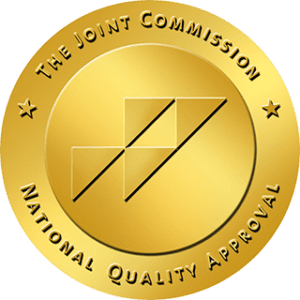If you’ve ever felt overwhelmed by intense emotions or found your relationships suffering because of impulsive behavior, you might benefit from a therapy approach called Dialectical Behavior Therapy (DBT). Originally developed to treat borderline personality disorder (BPD), DBT has since been adapted to help people with a wide range of emotional and behavioral challenges.
Recovery Cove treats both substance use disorders and mental health challenges, and DBT is one of the therapies we offer. We find that this treatment is effective at helping our clients manage big emotions, improve their relationships, and cope with challenging situations—all things that help prevent the return of substance use and mental health symptoms.
To help you better understand DBT and what to expect from this therapy, let’s cover the basics, including what it is, how it works, and who can benefit most from it.
What Is Dialectical Behavior Therapy?
Dialectical Behavior Therapy is a type of cognitive-behavioral therapy (CBT) designed by psychologist Marsha M. Linehan in the late 1980s. The word “dialectical” refers to the idea of combining opposing concepts—in DBT’s case, the core balance lies between acceptance and change. Essentially, DBT teaches people to accept themselves as they are while also working to change harmful behaviors.
Key Points to Know About DBT:
- Evidence-Based: Multiple studies have shown that DBT can effectively reduce suicidal behaviors, self-harm, and emotional dysregulation.
- Structured Approach: DBT typically involves weekly individual therapy sessions, group skills training, and optional phone coaching.
- Skill-Focused: Clients learn concrete techniques to manage intense emotions, navigate interpersonal conflicts, and reduce stress.
The Main Components of DBT
There are several components to DBT. Individual therapy involves working closely with a DBT-trained therapist to address current issues, set goals, and track your progress. These meetings allow for personalized support, where the therapist helps you apply DBT skills to real-life situations. Group sessions are also crucial, as they teach four main skill sets (discussed below) in a classroom-like setting alongside peers. The group aspect encourages shared experiences and peer support.
Some DBT programs may also offer phone coaching, allowing you to reach out to your therapist between sessions for immediate guidance on how to apply specific DBT skills during crises or challenging moments. At Recovery Cove, all DBT therapy sessions are held in-person. However, as you move on from our program, you may find that a therapist who offers phone coaching or telehealth services will be beneficial to your recovery.
The Four Core Skill Modules
Let’s dig into the four core skill modules that make up DBT:
1. Mindfulness
Mindfulness is the practice of staying present and fully engaged in the current moment without judgment. When you’re mindful, you’re better able to observe your thoughts and emotions without getting swept away by them.
2. Distress Tolerance
Distress tolerance refers to techniques that help you cope with pain or stressful situations. They are particularly helpful when change might not be immediately possible. Instead of resorting to harmful behaviors (like self-harm or substance abuse), you learn healthier ways to handle crisis moments.

3. Emotion Regulation
Emotion regulation involves the use of strategies to understand, label, and effectively manage intense emotions. By identifying your emotional triggers, you can respond more thoughtfully rather than reacting impulsively.
4. Interpersonal Effectiveness
Interpersonal effectiveness offers tools for maintaining healthy relationships, setting boundaries, and communicating needs effectively. Many people struggle with conflict resolution or asking for help; this module offers a roadmap for more balanced, respectful interactions.
Who Can Benefit From DBT?
Those who benefit most from dialectical behavior therapy are those with:
- Borderline Personality Disorder (BPD): DBT was initially created for individuals with BPD, especially those experiencing chronic suicidal thoughts or self-harm.
- Mood Disorders: People with anxiety, depression, or bipolar disorder can benefit from the emotion regulation skills taught in DBT.
- Substance Use Disorders: DBT helps individuals recognize and manage triggers, offering healthier coping mechanisms.
- Eating Disorders: Skills like distress tolerance and emotion regulation can be beneficial for those with bulimia or binge-eating behaviors.
- PTSD and Trauma-Related Issues: The mindfulness and emotional management components can help in processing traumatic events more safely.
Essentially, anyone struggling with emotional dysregulation or impulsive behaviors may find DBT useful, even if they don’t have a formal diagnosis of a specific mental health disorder.
What a Typical DBT Session Looks Like
Many people ask: “What does a DBT session look like?”
The session starts with a check-in where you discuss any problems or crises that occurred since the last session. If your group uses “diary cards,” you’ll also track emotions, behaviors, and skill usage throughout the week. This part of the session is really just an opportunity to share the challenges that came up and the skills you used to get through them. You’ll then receive feedback about how you handled the situation.
After check-ins, you will talk more about DBT skills. Some days are spent learning about the skills and others are spent practicing the skills. In individual sessions, you’ll spend time on problem-solving behaviors, such as self-esteem, and fill out diary cards. In group sessions, you may use role-playing or group exercises to learn and practice skills such as mindfulness and distress tolerance.
Your therapist will also help you problem solve and set goals. They will analyze situations where you might be struggling and help you strategize on how to respond to them differently the next time. Many DBT groups include homework, which often involves setting objectives for the upcoming week and focusing on specific skills to practice.
Tips for Getting Started with DBT
Look for therapists who are specifically trained and certified in DBT. They’ll have the expertise and resources needed for a structured DBT program. Be prepared for homework. DBT is very hands-on, often involving worksheets and diary cards. Consistent practice outside of therapy sessions is key.
Also, keep an open mind, as DBT works best when you have a willing attitude. This therapy isn’t a quick fix—it’s a process. It may take several months to experience lasting changes, so patience and consistency are crucial.
Final Thoughts
Dialectical Behavior Therapy is a powerful tool for individuals who struggle with intense emotions, self-harm behaviors, or turbulent relationships. By blending acceptance and change, DBT offers a roadmap for learning healthy coping skills and building a more satisfying life. If you think DBT might help you or someone you care about, reach out to Recovery Cove at 484-549-COVE.




